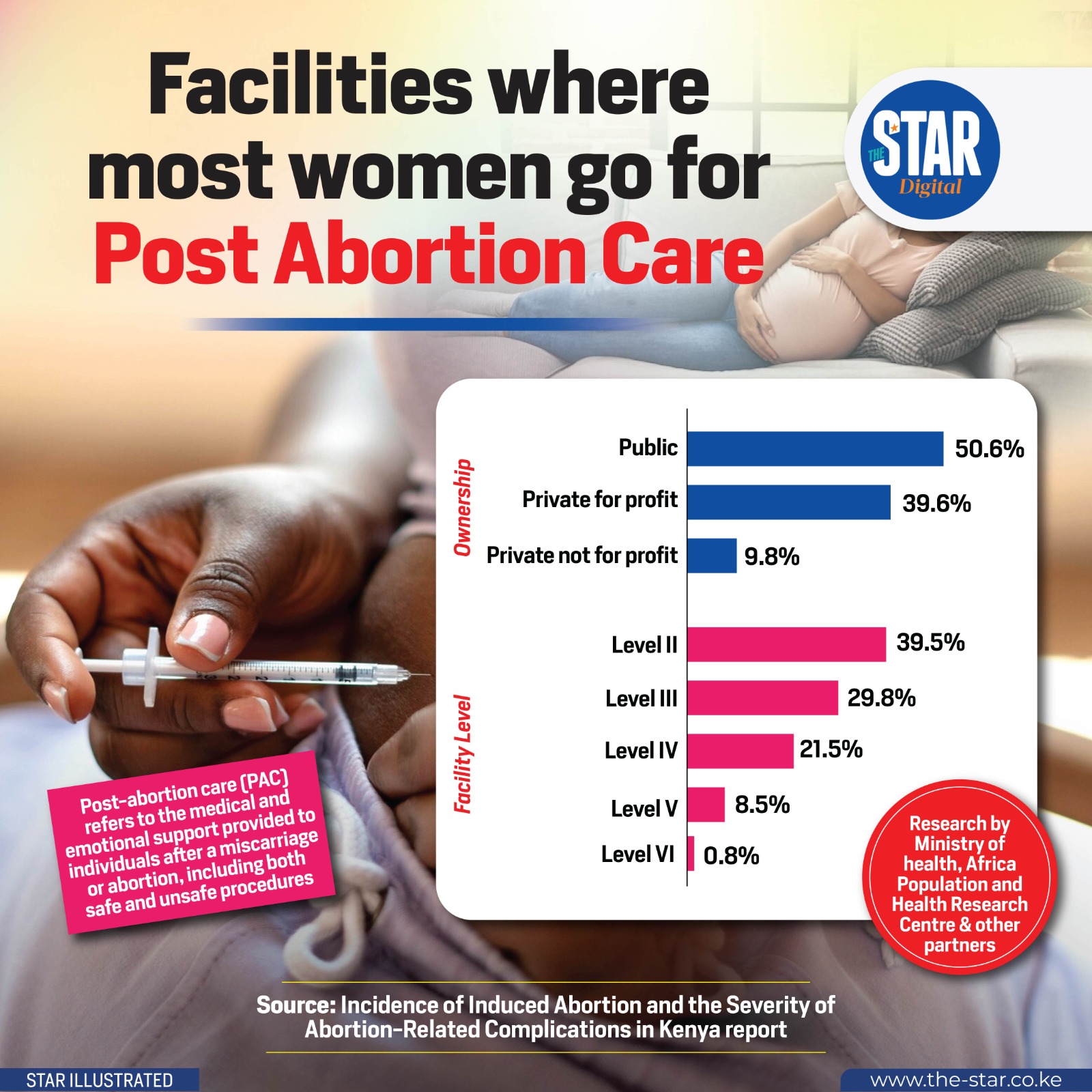 Facilities where most women go for Post Abortion Care
Facilities where most women go for Post Abortion CareThey manage more than over 51 percent of all cases. This is one of the findings of the new national study that also estimates the country saw 792,694 induced abortions in 2023, nearly double the 464,690 abortions recorded in 2013.
A policy brief, titled Incidence of Induced Abortions and the Severity of Abortion-Related Complications in Kenya, based on the national study, further explains the role the clinicians play.
Clinical officers, who are trained mid-level healthcare workers, handled more than half (51.5 percent) of all post-abortion cases in Kenya.
Nurses and midwives managed nearly 29 percent, while doctors and gynaecologists treated only a small fraction.
This reliance on clinical officers reflects both their central role in Kenya’s health system and the urgent need to expand the capacity of frontline health workers.
“Our findings highlight the importance of ensuring clinical officers are well-equipped and supported to deliver quality PAC services, as they are the backbone of care in many settings,” said Kenneth Juma, an officer with the policy brief authors, the Africa Population and Health Research Centre.
Most patients (65 percent) received manual or electric vacuum aspiration, the recommended procedure for uterine evacuation, while nearly 19 percent were treated with medication abortion.
Small percentages underwent more invasive procedures such as dilation and curettage. Notably, 80 percent of women received pain medication during treatment, and 92 percent received contraceptive counseling before discharge.
Yet only 43 percent left the facility with a contraceptive method, pointing to a missed opportunity to prevent repeat unintended pregnancies.
“Abortion remains a persistent and pressing issue in Kenya, cutting across all regions and social groups,” the brief states. “Clinical officers play a central role in providing care, particularly as access to post-abortion services has improved over the past decade.”
The study, conducted across eight regions using nationally representative data, found that about 304,159 women received care for post-abortion complications in 2023, corresponding to a PAC treatment rate of 22.0 per 1,000 women.
While that number has increased since 2012, the rise is not necessarily due to worsening health outcomes. In fact, the proportion of women with severe complications has dropped significantly, from 37 percent in 2012 to just 18 percent in 2023.
This shift suggests that more women are now able to access care for mild and moderate complications before their conditions become life-threatening.
The study also revealed persistent regional differences. Nairobi and Central Kenya reported the highest abortion rates, at 78.3 per 1,000 women, followed closely by Nyanza and Western regions at 69.4 per 1,000 women. Meanwhile, the lowest rates were recorded in the Coast and North Eastern regions.
In total, Kenya saw 2.85 million pregnancies in 2023, with 1.4 million of these being unintended. That puts the unintended pregnancy rate at 103.8 per 1,000 women, slightly down from 120 per 1,000 in 2012. However, the proportion of unintended pregnancies ending in abortion has increased, signaling that more women are opting to terminate pregnancies.
The policy brief calls for urgent investment in improving the capacity of health facilities to deliver high-quality post-abortion care, especially at the primary and mid-levels where clinical officers operate.
“Enhanced community awareness about PAC services and the availability of contraception can help ensure women know where and when to seek care,” the authors recommend. They also stress the need for sustained advocacy to ensure that national policies and guidelines on PAC are fully implemented.

















